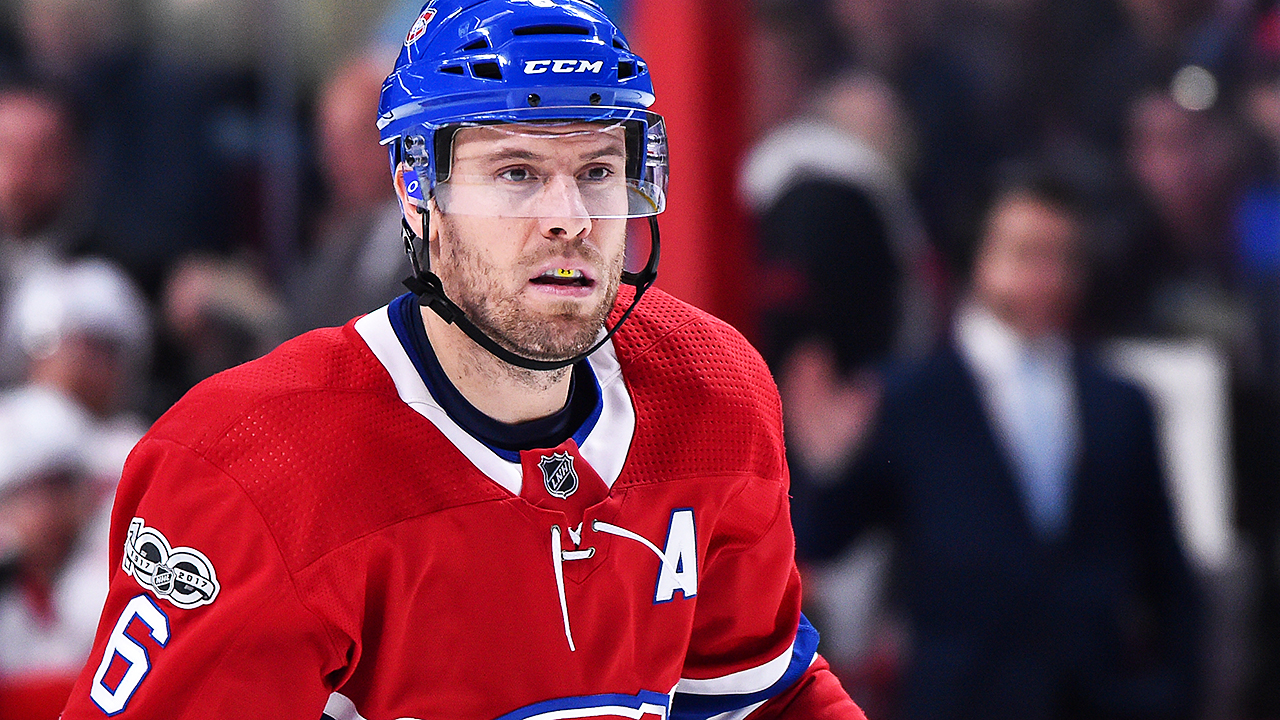MONTREAL— The Montreal Canadiens have an 11-5-4 record through 20 games.
Three more segments like this and not only will they make the Stanley Cup Playoffs, they’ll likely qualify to carry home-ice advantage through the first round—and possibly beyond.
The Canadiens are a team that opted for stability over the off-season while division rivals like the Buffalo Sabres, Toronto Maple Leafs and Florida Panthers made significant changes. As a result, it’s impossible to deny that the familiarity between the players—most of whom were on board for a 96-point campaign in 2018-19—has played a considerable role in their success thus far.
The chemistry has clearly developed further between all returnees, and 20-year-olds Cale Fleury and Nick Suzuki have fit in seamlessly and brought more talent to the equation.
Health has also been a key determinant for the Canadiens through the first two months of the season.
Granted, Jesperi Kotkaniemi missed seven games with a groin injury, and the team is about to be tested without Jonathan Drouin for at least a week.
But all signs point to Montreal being able to weather that storm.
[snippet id=4167285]
MOST IMPORTANT DEVELOPMENT:
Scoring. High-octane scoring, balanced scoring, depth scoring.
Not only is it the most important development for this Canadiens team, it’s also somewhat unexpected.
First off, it was hard to imagine they’d be able to repeat the success they had a season ago at 5-on-5—they finished fifth-overall in the category with 188 goals last season—but no team in the NHL has scored more than the 50 they’ve popped in the net at 5-on-5 so far.
Now consider that Montreal’s power play has jumped from 13.2 per cent efficiency last season to 20.3 per cent through 20 games this season and it’s not hard to understand why they rank sixth-overall in goals per game (3.50).
And the balance they’ve achieved all but assures they can come pretty close to keeping this up, even if they suffer injuries to key players like Drouin.
Outside of Charles Hudon and Ryan Poehling, who have strictly seen time in call-up roles, every player on the Canadiens has at least a point this season. Seven of them are on pace to score at least 20 goals, and Max Domi (who scored 28 goals last season) isn’t one of them.
Domi is, however, one of seven players on pace for 40 or more points.
Tomas Tatar (20 points) is their only player who ranks among the top-50 scorers in the NHL, but as Canadiens coach Claude Julien put it on Saturday, the Canadiens are not a team that relies on just two or three players carrying the load.
How’s their depth? As solid as it gets. Montreal’s eight defencemen and the fourth line of Nick Cousins, Nate Thompson and Jordan Weal have combined for 21 goals and 57 points. The rest of the team has combined for 49 goals and 112 points.
[snippet id=4745239]
MOST WORRISOME DEVELOPMENT:
The penalty kill, which has succeeded just 71.9 per cent of the time.
There are 29 teams who have done a better job in this aspect of the game than the Canadiens have so far.
At 5-on-5 the Canadiens have given up just 35 goals to the 50 they’ve scored. Only seven teams have given up fewer.
So, it’s hard to understand how the penalty kill has been so bad.
There’s hope it will improve with time, though it will take a long, successful run to reverse the numbers. As colleague Arpon Basu (of the Athletic) recently pointed out in this column, only two Claude Julien-coached teams over the last 14 years have finished with a penalty kill that’s less than 80-per cent effective, and this team has too many of the right components for the job for it to become the third.
But the Canadiens have their work cut out for them to buck the trend between now and the end of the season. If they can’t do it, it could turn out to be the most obvious impediment to them making the playoffs.

TOP SIX FORWARDS GRADE: A
LINE 1: Tomas Tatar (seven goals, 20 points)-Phillip Danault (six goals, 15 points)-Brendan Gallagher (nine goals, 17 points) = A+
These three have spent 168:39 together at 5-on-5—forced to play against the opposition’s best line for nearly all of it—and they have a 57.38 per cent corsi for. Is there anything else we need to bring up in order to justify their grade?
Didn’t think so.
LINE 2: Jonathan Drouin (seven goals, 15 points)-Max Domi (four goals, 13 points)-Joel Armia (six goals, 10 points) = B+
All in all, they’ve been really solid. Drouin boosts the rating a bit with how consistent he’s been, while Domi and Armia have had a cold stretch of late that keeps the line as a whole from an A-grade.
As a whole, that gives the top six an average grade of A.
BOTTOM SIX FORWARDS GRADE: B+
LINE 3: Paul Byron (one goal, four points)-Jesperi Kotkaniemi (two goals, three points)/Nick Suzuki (five goals, nine points)-Artturi Lehkonen (two goals, seven points) = B-
Breaking it down, Nick Suzuki has been an A-player while the other three have had trouble producing, but haven’t hurt the team much on the other side of the puck.
Can’t give Byron, Kotkaniemi and Lehkonen much better than a C-grade, so the average here works out to a B-.
LINE 4: Nick Cousins (two goals, seven points)-Nate Thompson (one goal, seven points)-Jordan Weal (three goals, four points) = A
Julien just wants a fourth line that can wear down the opposition’s defence and avoid getting scored on. It’s a bonus that these three have combined for 18 points, because they’re a combined plus-5.
You can’t ask for much more than that.
On the whole, the bottom six has done what’s expected of it. Hence it gets a B+.

DEFENCE GRADE: B
Simply put, the group has put together a solid effort with the high goals per game average (3.05) being largely skewed by the team’s penalty kill.
It has produced well offensively and been surprisingly efficient at moving the puck.
Is defence the weakness of this team? With Carey Price in net and the NHL’s most balanced attack, it is by default. But it hasn’t been bad.
A B-grade says it’s above average, which is accurate when you consider everything through the first 20 games.
GOALIE GRADE: B-
Price has the most wins in the NHL (10) and has steadily built up his game over the first 20. It’s fair to say we’ve seen close to his best over his last five performances.
As for Keith Kinkaid, his best came in a losing effort against his former team (the New Jersey Devils) this past Saturday. That he gave up four goals in the end and we’re still calling it "his best" tells you what you need to know about his first three games.
In all seriousness, Kinkaid was very strong in making 39 saves to salvage a point against the Devils. He’ll need to keep that up in order to achieve a winning record when all is said and done.
Back to Price, if he keeps doing what he’s been doing of late, he’ll be back in the conversation for the Vezina Trophy by year’s end.
AWARDS
MVP: Jeff Petry
Most Improved player: Jonathan Drouin
Best defensive player: Shea Weber
Most physical player: Ben Chiarot
(*Note: Advanced statistics used in this piece came from www.naturalstattrick.com)
[relatedlinks]









